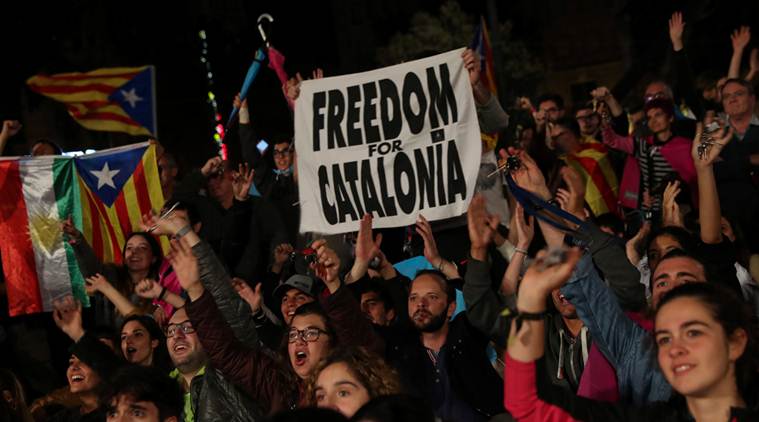Catalonia’s future
December 28, 2017 | Expert Insights

As Catalonians head to vote in the regional elections, will there be renewed efforts for the secessionist movement?
Background
Catalonia has been settled by the Phoenicians, the Etruscans, and the Greeks. In the 13th century, the institutions of Catalan self-administration were formed. This was done under the banner of Generalitat de Catalunya. Even though unification process took place under the leadership of the Crown of Aragon in 1476, Argon allowed Catalonia to retain its autonomy. Between 1640 and 1659, there was a revolt within Catalonia for secession. Parts of the region that ceded are now part of France.
In 2014, a non-binding Catalan self-determination referendum was held. Over 80% of the people voted in favor of independence. The momentum for an independent state once again began to build in 2017. A vote for the region’s secession was held on October 1st, 2017. Out of 5.3 million registered voters in the region, more than 2.2 million people voted, according to Catalan officials. Just under 90% voted in favor of secession. Political crisis marred by violence has since erupted in the region. Spain has rejected Catalonia’s declaration of independence. The government has also removed Carles Puigdemont, the Catalan leader. In addition, it was revealed that the Spanish court was considering jailing Puigdemont and other leaders of the secessionist movement.
In November the crisis escalated as eight of the Catalan ministers who had been removed by the main government were remanded in custody by a Spanish high court judge over the region's push for independence. Prosecutors are also seeking a European Arrest Warrant for ousted Catalan leader Carles Puigdemont. Among those who have been jailed is Puigdemont’s deputy, Oriol Junqueras.
Analysis
On November 5th, 2017, Carles Puigdemont and four of his associates turned themselves into Belgian police. The Spanish authorities had issued an arrest warrant for rebellion and sedition. The Spanish government has scheduled elections for the region in December 2017. The vote will take place on December 21, 2017.
The run up to the elections have been extraordinary and bitterly contested as they have set the secessionists against unionists. Puigdemont’s former number two, Oriol Junqueras, has been fighting the election from prison. Secessionists believe that Madrid’s actions will further their cause and get them more support during the elections. Unionists, on the other hand, have noted the independence movement resulted in a lot of anxiety over the region’s economic fate.
“This is not a normal election,” Puigdemont told supporters via video link on Tuesday evening as the campaign drew to a close. What is at stake is not who gets the most votes, but whether the country [Catalonia] or Rajoy wins.”
Inés Arrimadas, the leader of the Catalan branch of the national Citizens party, has staunchly been anti-secessionist. She said, “Catalonia that is broken and divided or to begin a new era for all Catalans. On Thursday, we are going to awaken from this nightmare of the independence push.”
Spanish Prime Minister Mariano Rajoy said, “We have sacked the [Catalan] government because it was seated on a cascade of illegalities. Those of us who defend democracy, the constitution and the law are on the good side of history.”
Assessment
Our assessment is that the election will not heal the deep fractures in the ties between Madrid and Catalonia that have risen due to the secessionist movement. Polls have also projected that the elections will be a close call and could possibly result in a hung Parliament, which will further deepen the crisis the region.








Comments